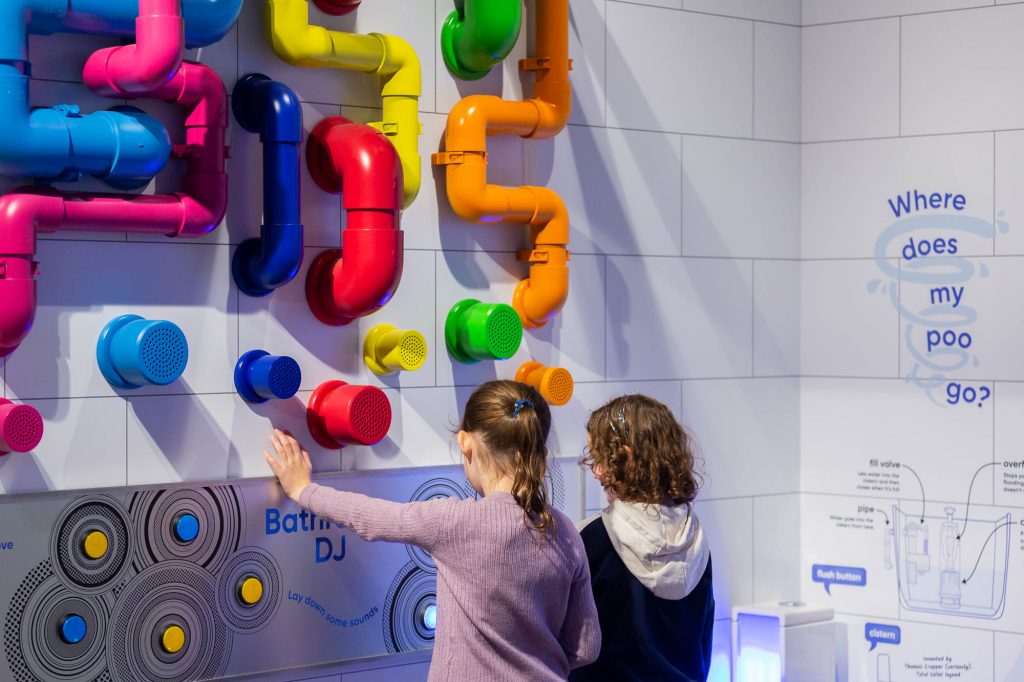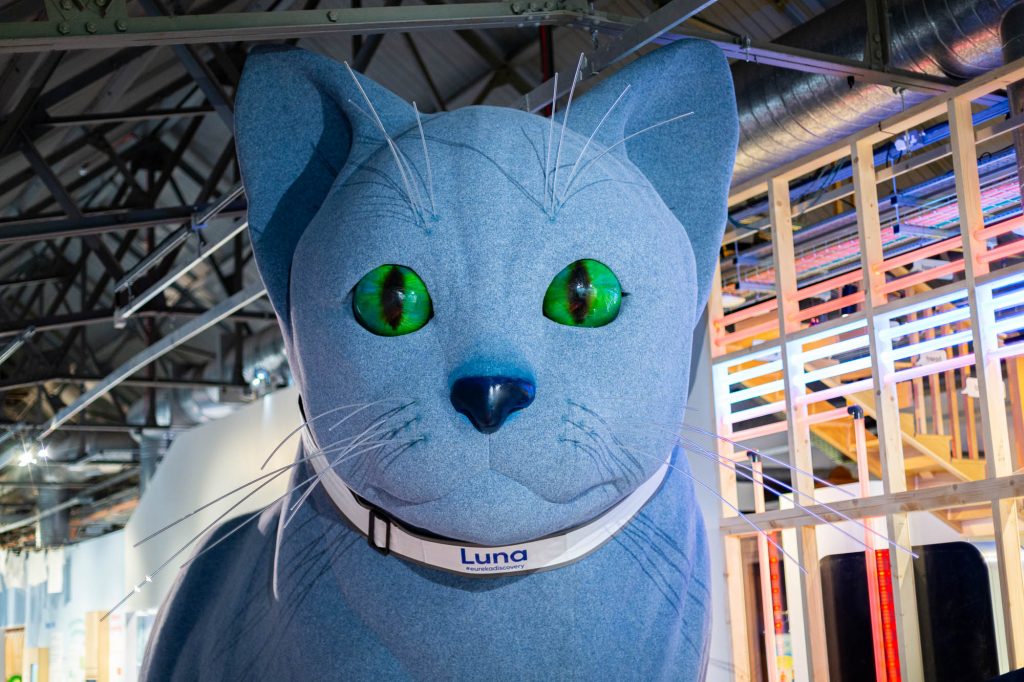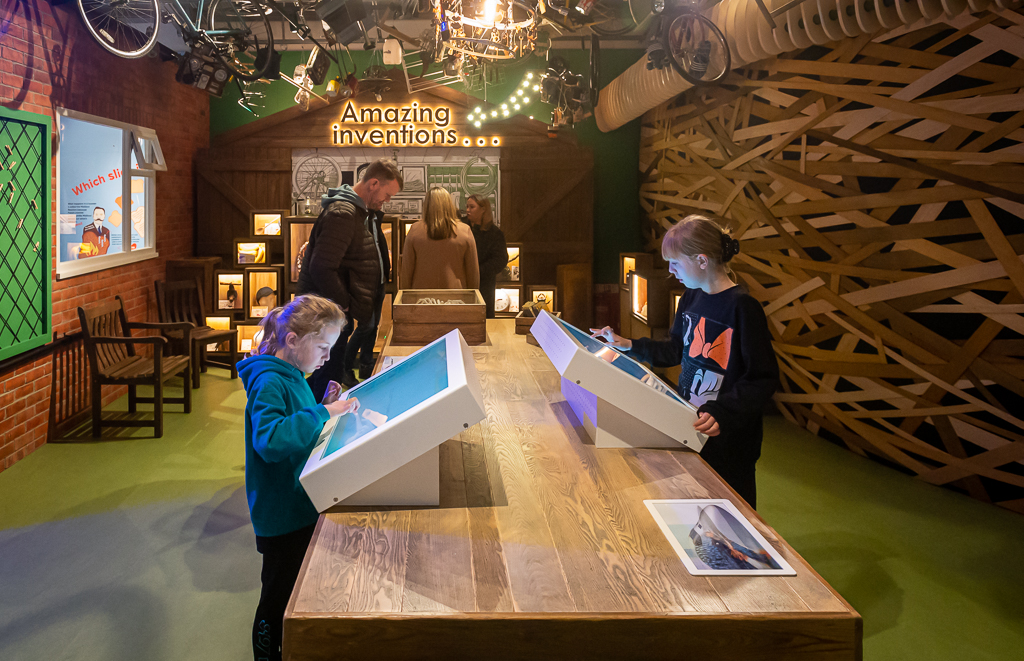Enjoy this article?
Most Museums Journal content is only available to members. Join the MA to get full access to the latest thinking and trends from across the sector, case studies and best practice advice.

It was a few years back when I heard that Eureka! was coming to Seacombe Ferry Terminal, Wirral, and I have been looking forward to this addition to visitor attractions on Merseyside ever since. Eureka! Science + Discovery sets out to inspire children of ages 14 and under in “Steam” (science, technology, engineering, arts and maths) subjects.
This is the second venue in Eureka’s roster, the first being Eureka! The National Children’s Museum in Halifax, which opened in 1992, was the UK’s first museum for kids, has won multiple awards over the years and is much-loved. So, my expectations were high.
To visit the Wirral’s new addition, bookings are made online. A pop-up informed me that The Burrow (an area devoted to 0-7 year olds) and cafe would not be opening until January 2023. I was visiting in December with my four-year-old and my baby so I was pleased to have this information pre-visit.
It was a wet winter’s day so we travelled by car through the Mersey tunnel from Liverpool – in better weather getting the ferry across would be fantastic. Eureka! is easily accessible by public transport, with numerous buses stopping outside. The venue is clearly signposted and there was ample parking, although I was surprised by the charge for this on top of the £15.95 ticket price for anyone over the age of three.

The entrance area is spacious, but although staff greeted us it didn’t have a welcoming feel. Staff were quick to let us know there was a pop-up cafe with drinks and cakes in a picnic area. We weren’t given any information about the venue, though.
Once inside, we felt unsure how to proceed so went back to the welcome desk to ask if there was a map and a suggested route. The map was on a screen and interactive. Clearer signage around the venue would have been better. The lifts and toilets were pointed out and we were told there were three areas – Bodies, Nature and Home – and to start in Bodies on the ground floor and then head up to the first floor using the main lift in the entrance area.
Once we understood the layout, we headed as advised to Bodies. It was aimed at an older age range and the space was jam-packed with interactives, which we found overwhelming, but older children might find healthily stimulating.
We stopped at the brain games – these were fun but you couldn’t swap easily between games, so if it wasn’t suitable for your group you had to wait for it to finish before you could try another. This unchangeable element led to boredom, when a level ranking on the games would have helped avoid this.

The space was quite text-heavy, so possibly wasn’t that well-suited to my family’s age-range. An audio description would have been welcome, though there was already lots of noise overspill from interactives. We continued in this section and enjoyed the pinball machines, but felt it wasn’t aimed at us so headed upstairs in the lift.
We came out in the section on Nature. Instantly, this felt better suited to my four-year-old and baby. There was very little text, and the zone could be explored through play and imagination so was appealing to youngsters. We especially enjoyed the area that looked at waterpower and wildlife in the River Mersey, which is in a space that overlooks the river, making the learning relevant to its surroundings.
There was no clear signage to the toilet and baby-change, but a member of staff was happy to point them out. The toilets were clean, but I noticed the pull-cord in the accessible toilet had been tied up and the positioning of the nappy bin made it difficult to get a pram into the baby-change area.
This was a good time for lunch so we headed to the pop-up cafe. It was well stocked, the staff were lovely and the cakes delicious. There were vegan and free-from options, which bodes well for the permanent cafe. However, we had chosen the three-hour car park option so didn’t linger.
Between Nature and Home was an area looking at how nature inspires inventions. We loved this area as it was laid out simply and was beautifully designed. Something from nature was paired with a question or example of an invention it had inspired. This led to great conversations and queries between me and my family.
Next up was Home, which was our favourite area by far, but again had a different approach to layout, design and interpretation. My son seemed comfortable and confident in this space, and engaged with the interactives without needing instruction or prompt. It had a broader appeal to older children, too, and the interactives engaged the children in a meaningful way.

The written interpretation worked well, being easy to digest, informative and interesting. One of the bigger interactives wasn’t working, which we’d presumed we just weren’t operating properly until a member of staff let us know it was broken. Again, this is an example of where signage would have been helpful.
As we worked our way through Home it became clear that we had somehow started at the back and were working our way to the front. Time was nearly up on our parking ticket and we were regretting spending so much time in Bodies as we were having to rush through the area we were enjoying the most.
Next time, I will approach Eureka! differently, starting with Home and entering it from the front, as I’m sure was the aim of the design. Then, we’ll spend some time in Nature and finish with a shorter visit to Bodies.
Overall, the venue felt a little disjointed, but all-in-all we had a good day out.
Christina Waugh is the engagement producer (schools), learning and participation, for National Museums Liverpool
Most Museums Journal content is only available to members. Join the MA to get full access to the latest thinking and trends from across the sector, case studies and best practice advice.